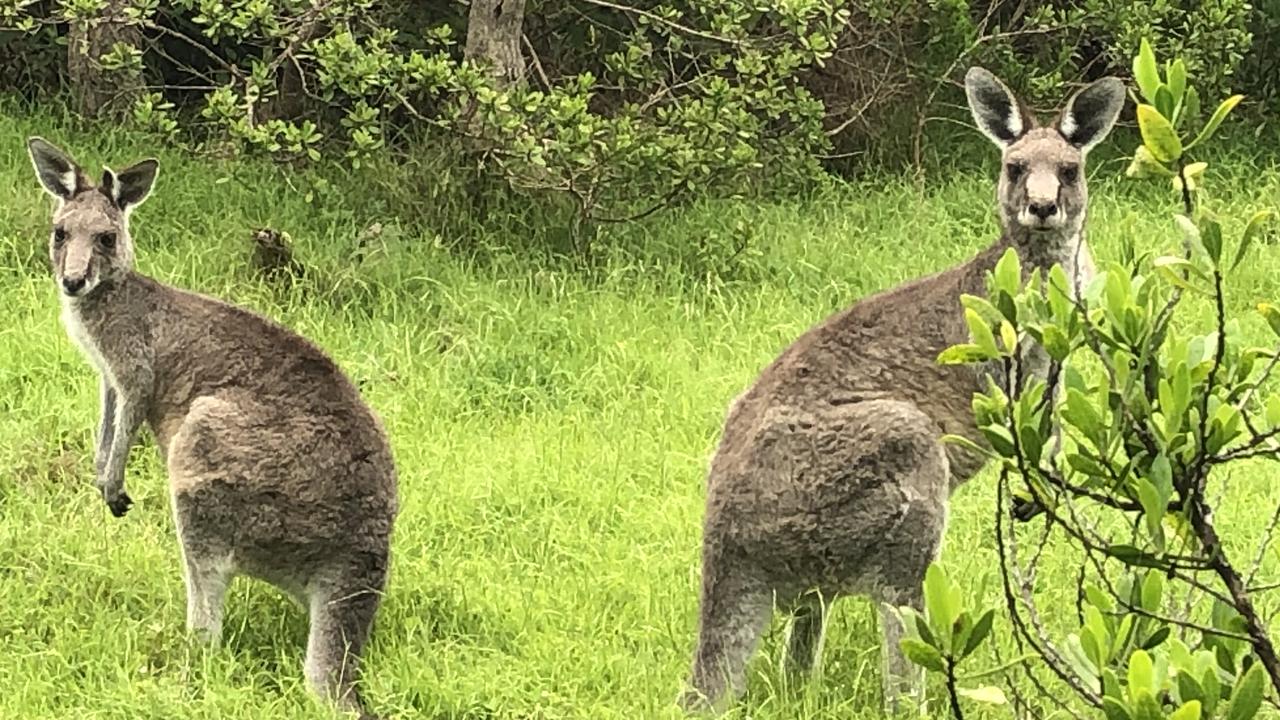‘Not making a dent’: Kangaroo numbers explode in Victoria
Farmers fear Victoria’s kangaroo population is exploding in the wake of a flawed quota scheme that grants commercial shooters the bulk of the quota and cuts the number landholders can cull.

Farmers fear Victoria’s kangaroo population is exploding in the wake of a flawed quota scheme that grants commercial shooters the bulk of the quota and cuts the number landholders can cull.
The most recent harvest reports show commercial shooters were granted a quota of 139,544 grey kangaroos in the nine months to September 2023, but only managed to harvest 61,907 to be processed into meat and hides.
The shortfall follows on from 2022, when a quota of 118,980 was set, but just 68,346 were harvested, and in 2021 when tagswere available to cull 93,640 kangaroos, but just 62,234 were shot for processing.
Locksley mixed farmer Will Martin said commercial harvesting was not making a dent on the state’s kangaroo population.
“The numbers have exploded since the (October 2022) floods, doubling and doubling again each year,” he said.
This year’s commercial harvest is expected to be even lower than in 2023, following a December 10 export ban on Victoriankangaroo products, due to delays in the state government regaining federal approval to trade under the Environment Protectionand Biodiversity Conservation Act.
The government’s Kangaroo Harvesting Program website, which was last updated in July this year, states that “from December 10 2023, Victorian harvested kangaroo products cannot be exported internationally”.
Australian Wild Game Industry Council chairman Ray Borda, who runs South Australia’s Macro Meats, said the export ban in combinationwith animal activist campaigns against roo harvesting meant it was a struggle to meet the Victorian quota.
He said Nike and Puma’s decisions to abandon using kangaroo leather in their shoes in the wake of animal activist campaignshad also eroded margins. “Hides were 30 per cent of our income, now it’s 1 per cent,” Mr Borda said.
Yet despite the export ban and slump in demand, the Victorian government set a commercial quota of 155,650 for this year,which commercial shooter Glenn Cole said would not even be half met.
Meanwhile, the number of kangaroos that farmers can cull using Authority to Control Wildlife permits has been set at 80,700,despite concerns the population is exploding.
Glenaroua farmer Pam Beerens said up until 2020, the department had granted her the right to cull 200 kangaroos, but in 2021that was cut back to 100, then in 2022 and 2023 back to 40, despite reporting 1000 invading her pastures.
Ms Beerens said she hit six kangaroos in her vehicle on the access road to her property last year and had almost given upher rotational grazing program, given the kangaroos graze down any paddock she tried to lock up to grow a bit of feed. MrMartin said he was still waiting on the Department of Energy, Environment and Climate Action to respond to an ATCW permithe lodged eight months ago.
Farmers and harvesters are reporting mobs in locations where they have never been seen before. But getting an accurate measureof just how many kangaroos are out there is difficult because the Arthur Rylah Insitute, tasked with counting them, last conductedan aerial survey in September-October 2022.
ARI’s 2022 count of 2.36 million has been used to set an overall 2024 cull quota of 10 per cent of the population – about236,000, which was split between commercial harvesters (155,650) and landholders seeking ATCW permits (80,700).
But rather than increasing the number of roos farmers can cull using ATCW permits, the government is relying on growth inthe commercial harvest, despite the repeated shortfalls.
The DEECA 2024-28 kangaroo harvest plan states: “It is anticipated that the portion of commercial quota within the total quota will increase as the number of ATCW applications decrease and transition to persons acting under the KHP (commercial Kangaroo Harvest Plan)”.
“Under the previous KHP 2021-2023, the number of kangaroos approved for control under ATCWs decreased from 78 per cent to46 per cent.”
The share of quota allocated to ATCW permits has slumped even further in 2024 to just 34 per cent.
Victorian opposition agriculture spokeswoman Emma Kealy said she thought DEECA bureaucrats were trying to reduce the cullby cutting back ATCW permit numbers.
“The department appears to be destroying kangaroo culling by stealth,” Ms Kealy said.
The Weekly Times asked DEECA if it had cut back on the number of kangaroos landholders could cull using ATCW permits, andif not, had it considered increasing permit allocations to offset the low numbers being shot as part of the commercial harvestingprogram.
Rather than answering those specific questions, the DEECA team said: “Landholders who can’t access a KHP (commercial) harvestercan apply to the Conservation Regulator for an Authority to Control Wildlife permit if they are experiencing damage or losscaused by kangaroos.”




